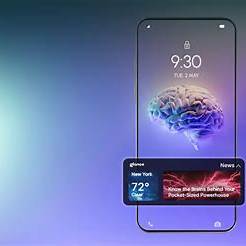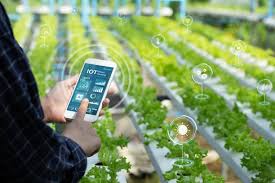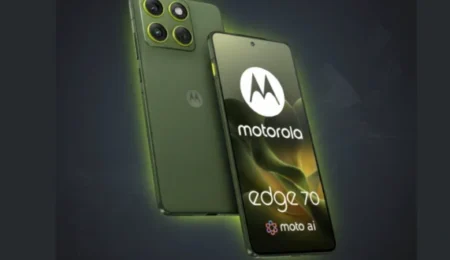The era of next evolution mobile phones is upon us a time when devices will no longer be mere slabs of glass and metal, but intelligent companions. In this AI-driven mobile future, smartphones will transcend the touch interface, anticipating user needs, perceiving context, and adapting in real time. The concept of beyond the screen is not a metaphorical slogan it’s the threshold into which the industry is already stepping. In this article, we dive deep into how AI in smartphones and on-device AI are shaping the next generation of mobile experiences, and what challenges and opportunities lie ahead.
1. Beyond the Screen: The Next Evolution of Mobile Phones in an AI-Driven World:

Smartphones have long been defined by thinner bezels, larger displays, faster chips, and better cameras. But the horizon now beckons a far more radical shift one where the screen is just the door way, and intelligence becomes the operating system itself. In this AI-driven world, phones won’t just respond to your touches they’ll anticipate your next action, tailor the interface to your mood, and even augment your reality seamlessly.
2. From Smart to Sentient: Reimagining the Phone:
1. The Limits of Traditional Smartphones:
For years, the evolution of mobile phones centered on incremental enhancements: pixel counts, refresh rates, battery efficiency. But those improvements are reaching diminishing returns. Users increasingly ask: What’s next? The interface, the context awareness, the intelligence — those become the battlegrounds.
2. What “Beyond the Screen” Really Means:
Beyond the screen suggests:
- Interfaces that emerge when needed (voice, gesture, AR)
- Intelligence built into hardware — local inference, context modeling
- Adaptive form and materials that change with purpose
- Transparent augmentation of reality, not just apps behind glass
This is not sci-fi, many of these features are in nascent form today.
3. The Core Technologies That Will Enable the Next Evolution:
1. On-Device AI & Edge Intelligence:
One of the pivotal shifts is migrating AI processing from the cloud to the device itself. On-device AI reduces latency, increases privacy, and enables real-time, always-on features. Deloitte predicts that smartphones with generative AI capabilities embedded locally will proliferate in 2025 to rejuvenate consumer upgrade cycles.
The architecture for this involves specialized NPUs, hardware accelerators, and energy-efficient models. Federated learning and edge AI paradigms play a vital role, distributing model updates without sacrificing user data privacy.
2. Generative AI as a Core Feature:

Gone are the days when AI is just “assistant mode.” The next phones will have generative AI capabilities at their core letting users create images, text, even music, without needing to call on the cloud. Qualcomm calls this “Beyond Smart,” emphasizing built-in generative AI that reshapes interfaces.
Imagine editing a photo by voice: “Make the sky more dramatic, reduce noise, add mood,” and the phone responds instantly no upload delays.
3. Sensor Fusion, Context Awareness & Multimodal Interfaces:
The next evolution phone will fuse data across cameras, microphones, inertial sensors, depth sensors, thermal and even biosignals to understand context. That means the device can detect when you’re walking, driving, relaxing, or in a meeting and adapt UI, notifications, and suggestions accordingly.
Multimodal interfaces (voice + gesture + glance) will reduce screen dependence. The phone might project a tiny hologram, or respond to gaze, voice, or skin touch blending physical and virtual seamlessly.
4. Advanced Connectivity 5G-Advanced & Beyond:
All these capabilities demand robust connectivity. The arrival of 5G-Advanced (a.k.a 5.5G) brings ultra-low latency, higher throughput, and more intelligent network slicing.
Looking further, 6G is envisioned as AI-empowered wireless networks where intelligence permeates the network itself optimizing routing, bandwidth, and the interaction with edge devices.
4. New Forms & Interfaces: Redefining the Physical:
1. Adaptive Materials & Morphing Devices:
Future phones may not remain fixed slabs. Think foldables, rollables, stretchables, or even modular skins that change shape. With smart materials embedded with sensors and actuators, a phone could flex or wrap around your wrist.
2. Projection & Mini Displays:
One approach to go beyond the screen is to project UI elements on adjacent surfaces (walls, tabletops), so the phone becomes a source of context, not just a canvas. Combined with depth sensing, the projection can track finger interactions in midair.
3. Augmented Reality & Mixed Reality:
AR glasses, contact lenses, or hybrid devices will become extensions of the phone, letting users look through the world and see AI overlays, location-aware info, and interactive holograms. Meta, Apple, Google are all investing heavily in this integration. The phone becomes the compute hub for the glasses.
4. Invisible, Ambient Interfaces:
Eventually, the phone might not need a screen at all interfaces could be ambient, voice-only, or projected. The device could sense when you want it, and vanish when you don’t.
5. Use Cases & Scenarios: Life After Screen:
1. Proactive Assistance & Personal AI Agents:
Imagine a personal AI companion that tracks your schedule, health signals, habits, and proactively offers help: “You’re dehydrated, drink water”; “Meeting in 5 min here’s prep notes.” Unlike traditional assistants, these agents will run locally, respecting privacy, and work seamlessly across contexts.
2. Real-Time Multilingual Communication:
Phones with real-time translation (voice + visual) across multiple languages will break down communication barriers. Samsung’s Galaxy series already offers Live Translate and translation during voice calls.
3. Smarter Imaging & Cinematic Creation:
AI-powered camera systems will automatically compose, edit, stabilize, color correct, and even generate missing pixels. For example, Samsung’s ProVisual Engine enhances image processing dynamically.
4. Health Monitoring & Personalized Wellness:
With embedded biosensors, phones can monitor heart rate, glucose, stress signals, and offer customized health insights. Combined with AI, they can detect health anomalies early.
5. Adaptive Gaming, AR & Immersive Media:
Games will adapt difficulty, environment, and UI in real time based on detected emotion, skill, and context. AR experiences will overlay digital environments onto real spaces, using the phone as the gateway.
6. Smart Home & IoT Orchestration:
Your phone becomes the orchestration layer for your smart home ecosystem adjusting lights, climate, appliances automatically. The AI hub will anticipate needs.
7. Autonomous Decision Making:
Phones may act autonomously: respond to calls, schedule meetings, negotiate on your behalf, and execute tasks even when you’re not actively using them — all while keeping you in control.
6. Business & Developer Implications:
1. App Paradigm Shift:
Conventional app models may fade. Instead of launching apps, you give commands like “summarize my emails” or “generate a poster,” and the AI executes under the hood.
Developers will build AI agents or skills rather than standalone apps. The platform becomes a host for modular, composable intelligence.
2. Monetization & Ecosystems:
Monetization shifts from paid apps and in-app purchases to AI services, agent marketplaces, and micro-subscriptions for specialized models or features.
3. Privacy, Ethics & Regulation:
With AI intimately integrated, privacy becomes paramount. On-device AI helps mitigate risk, but governance, transparency, and user control are essential. Regulations will evolve to govern data rights, interpretability, and fairness in mobile AI.
4. Hardware & Supply Chain:
Demand for NPUs, smart sensors, advanced materials, and novel displays will reshape supply chains. Partnerships will emerge across chipset makers, AI startups, and device OEMs.
7. Challenges & Risks:
1. Energy, Heat & Efficiency:
Running constant on-device AI is resource-intensive. Battery capacity, heat dissipation, and energy-efficient architectures will be critical challenges.
2. Model Size, Updates & Versioning:
Large AI models must be pruned or quantized for device use. Managing updates, backward compatibility, and model fragmentation is nontrivial.
3. Privacy & Trust:
Even if data is processed locally, the models themselves may encode sensitive patterns. Ensuring user trust, transparency, and opt-outs is essential.
4. Usability & Adoption:
Radical interfaces risk confusion. The transition must be smooth and gradual, bridging old paradigms with new ones.
5. Fragmentation & Platform Lock-In:
Companies may build ecosystems that are incompatible. Open standards and interoperability will help avoid siloed AI visions.
8. The Road Ahead & Timeline:
1. Short-Term (2025–2027)
- Mainstream phones with on-device generative AI and smarter assistants
- Enhanced AR integration, localized inference
- Gradual adoption of adaptive interfaces
- Early foldable, rollable, morphing form factors
2. Mid-Term (2028–2032):
- Seamless AR glasses tethered to phones
- Holographic or projection-based UIs
- More autonomous agent behaviors
- Integration of biosensors, health AI
3. Long-Term Vision (2033+):
- Phones fading into ambient compute
- Intelligence distributed across devices, wearables, surfaces
- The concept of “phone” may morph into a personal AI presence
- Fully context-aware, always present digital companions
9. Real-World Examples & Emerging Signals:
- Honor’s Magic 8 Pro is branded as a “self-evolving AI smartphone,” with a dedicated AI button and over 3,000 tasks handled by its YOYO agent.
- OnePlus’ recent update OxygenOS 16 integrates Google’s Gemini AI deeper into the user experience.
- Samsung’s Galaxy AI suite includes features like live translation, sketch-to-image generation, and context-aware assistants.
- T-Mobile is developing a dedicated “AI Phone” powered by Perplexity Assistant, focusing heavily on voice and agent control.
10. Conclusion:
The future of mobile phones is not just about sharper screens or faster chips. It’s about crafting devices that live beyond the screen senses that perceive, agents that act autonomously, and interfaces that adapt seamlessly. In an AI-driven mobile future, phones evolve into partners, companions, and extensions of ourselves.
The road ahead is laden with challenges energy constraints, privacy, usability but the signals are clear. With generative AI, on-device intelligence, connectivity, and sensor fusion advancing rapidly, the next evolution of mobile phones is shifting into view.
Internal Links For More Info:
- AI in Smartphones – Qualcomm Blog
https://www.qualcomm.com/news/onq/2024/04/beyond-smart-the-rise-of-generative-ai-smartphones
Use in intro when discussing “AI-driven mobile future.” - Future of Smartphones – Deloitte Insights 2025
https://www.deloitte.com/us/en/insights/industry/technology/technology-media-and-telecom-predictions/2025/gen-ai-on-smartphones.html
Use when mentioning on-device generative AI adoption trends.
- Edge AI and Federated Learning – Research Paper (arXiv)
https://arxiv.org/abs/2101.04866
Cite when describing on-device AI and privacy preservation. - 5G-Advanced Explained – GSMA Intelligence
https://www.gsma.com/solutions-and-services/5g-advanced/
Include under the connectivity section. - 6G AI-Empowered Networks – arXiv Research
https://arxiv.org/abs/1904.11686
Use when projecting 6G and AI-native connectivity. - AI Hardware Acceleration – ARM Developer
https://developer.arm.com/solutions/machine-learning-on-arm
Use when explaining NPUs and AI chip evolution.
- Samsung Display – Future of Foldables and Rollables
https://www.samsungdisplay.com/global/foldable/
Use in section about adaptive materials and shape-shifting phones. - Apple Vision Pro – Official Page
https://www.apple.com/apple-vision-pro/
When describing AR/MR integration with smartphones. - Meta Reality Labs – Mixed Reality Research
https://about.meta.com/realitylabs/
For section on AR, MR, and future human-computer interfaces.
- Samsung Galaxy AI Overview (Wikipedia)
https://en.wikipedia.org/wiki/Galaxy_AI
Cite when discussing Live Translate or sketch-to-image features. - Honor AI Smartphone Announcement – TechRadar
https://www.techradar.com/phones/honor-phones/honor-reveals-its-first-self-evolving-ai-smartphone-and-yes-it-has-an-ai-button
Use in the “Emerging Signals” section. - OnePlus OxygenOS 16 with Google Gemini – The Verge
https://www.theverge.com/news/800754/oneplus-oxygenos-16-gemini-mind-space - T-Mobile AI Phone Project – The Verge
https://www.theverge.com/news/623164/t-mobile-ai-phone-perplexity-assistant-mwc-2025
- AI Ethics Guidelines – European Commission
https://digital-strategy.ec.europa.eu/en/policies/european-approach-artificial-intelligence
Include when discussing privacy, transparency, and AI regulation. - MIT Technology Review – AI Transparency Challenges
https://www.technologyreview.com/
Link when highlighting user trust and model interpretability. - Harvard Business Review – Responsible AI Development
https://hbr.org/topic/artificial-intelligence
Reference under “Ethics & Regulation.”
- World Economic Forum – Future of Mobile AI
https://www.weforum.org/agenda/archive/artificial-intelligence/
Add near the conclusion to support the idea of global transformation. - IEEE Spectrum – AI and the Future of Mobile Devices
https://spectrum.ieee.org/mobile-ai
Perfect for reinforcing technical credibility. - Gartner Report – Mobile AI Trends 2025
https://www.gartner.com/en/newsroom/press-releases
Include in a data-driven context or when citing forecast insights. - OpenAI – AI and Human-Computer Interaction Research
https://openai.com/research
Can be used in the long-term “AI as a companion” section.
Internal Links
- Samsung Galaxy Watch Active2 Specification Samsung Galaxy Watch Active2
- Vivo iQOO Z10 Turbo+ Specification Vivo iQOO Z10 Turbo+
- Reinventing the Bezel: How the Galaxy Watch8 Classic Blends Luxury Design with Cutting-Edge Wellness Tech
- The Impact of Government Regulations on Mobile Privacy: How Laws Shape Your Phone’s Secrets
- Smartphones: HOW Changing Our Mental Health and Attention Spans



Leave a Reply